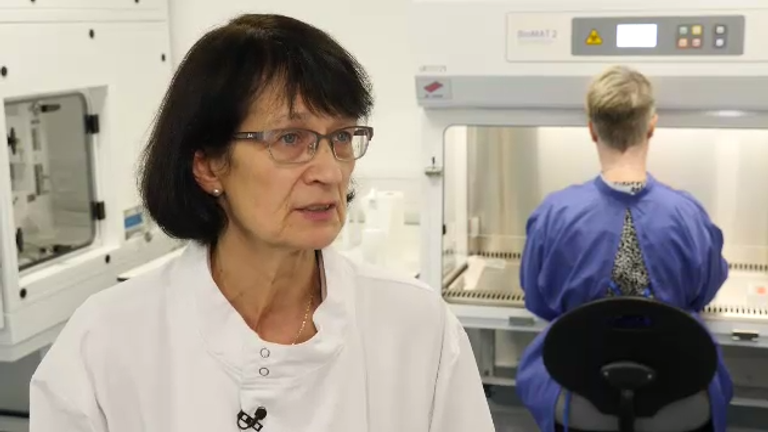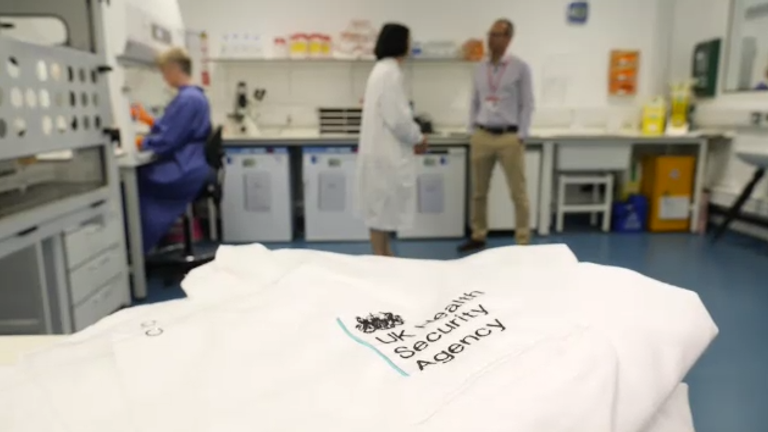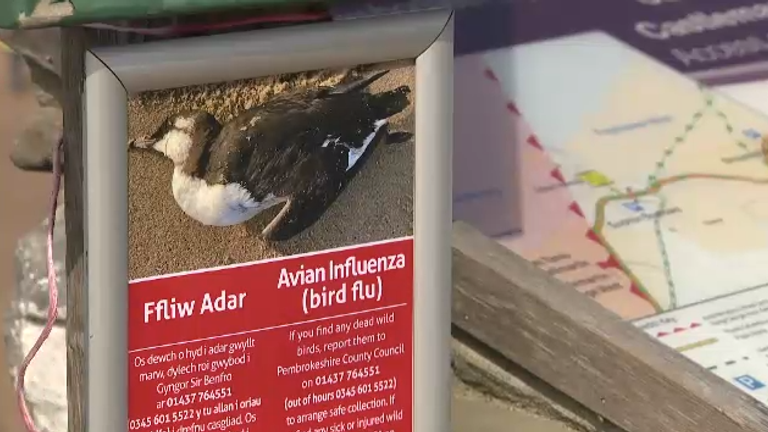UK scientists have begun developing vaccines as an insurance against a new pandemic caused by an unknown “Disease X”.
The work is being carried out at the government’s high-security Porton Down laboratory complex in Wiltshire by a team of more than 200 scientists.
They’ve drawn up a threat list of animal viruses that are capable of infecting humans and could in future spread rapidly around the world.
Which of them will break through and trigger the next pandemic is unknown, which is why it’s referred to only as “Disease X.”
Sky News was escorted around the site, which is run by the UK Health Security Agency, to see the work being done in high-containment labs.
Professor Dame Jenny Harries, the head of the UKHSA, told Sky News: “What we’re trying to do here is ensure that we prepare so that if we have a new Disease X, a new pathogen, we have done as much of that work in advance as possible.
“Hopefully we can prevent it [a pandemic]. But if we can’t and we have to respond, then we have already started developing vaccines and therapeutics to crack it.”
The Vaccine Development and Evaluation Centre at Porton Down has been expanded to take on the work.
Originally, it was focussed on COVID and testing the effectiveness of vaccines against new variants.
But scientists at the centre are now involved in monitoring several high-risk pathogens, including bird flu, monkeypox and hantavirus, a disease spread by rodents.
One early success is the world’s first vaccine against Crimean-Congo haemorrhagic fever, a disease that’s spread by ticks and has a fatality rate of 30%.
Early stage clinical trials have just started, with 24 volunteers expected to test the jab.
The disease is becoming more common in Europe as global temperatures rise and some travellers have returned to the UK with the infection.
Read more:
COVID-19 potentially ‘spread from deer to humans multiple times’
Nicola Sturgeon admits there was ‘no plan’ to deal with pandemic
Prof Harries said climate change and population shifts are making another pandemic more likely.
“What we’re seeing is a rising risk globally,” she said.
“Some of that is because of things like urbanisation where you may get virus jumping into humans [living close-by], as we’ve seen with bird flu.
“And some of it is because of climate change where you get things like ticks and mosquitoes moving to where it was previously cold and is now becoming increasingly warm.
“So this is a growing risk agenda. But it’s one we can use our science actively to prevent human impact.”
Click to subscribe to the Sky News Daily wherever you get your podcasts
Bird flu is currently thought to be the most likely pandemic threat.
The Royal Society for the Protection of Birds says at least 30,000 seabirds have died around the UK this summer as a more virulent strain of the H5N1 virus has swept around the world.
There is also evidence of limited spread in some mammals.
And four people working on poultry farms in the UK have also tested positive, but were only mildly affected.
The UKHSA has started monitoring people in close contact with birds in case it can spread without causing symptoms.
The agency is part of a global effort to develop a vaccine within 100 days of a new pathogen being recognised as having pandemic potential.
“Historically, that would be unheard of,” said Prof Harries.
“It would normally take five or 10 years. For COVID it was around 360 days.
“So this is a really high ambition. But for some viruses, it is definitely possible.”




